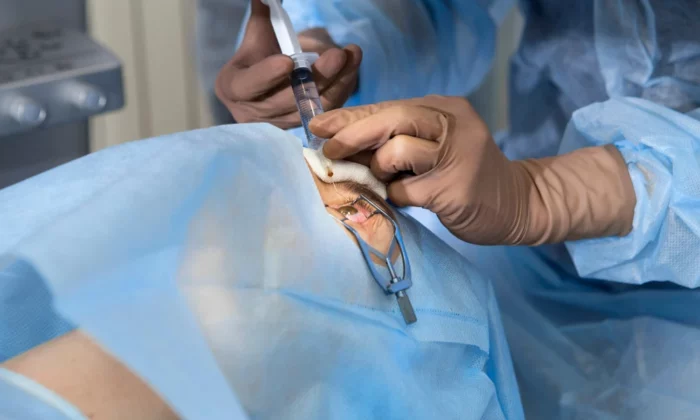
Imagine waking up after squint surgery, a mix of relief and anticipation coursing through you. You’ve taken the brave step towards clearer, more aligned vision. But, you may wonder, what comes next? What does the road to recovery look like? In the next few minutes, you’ll learn about the typical recovery time after undergoing squint surgery, how to handle common symptoms, and the steps to take for post-operative care to make your recovery as smooth as possible. Whether it’s managing swelling or understanding potential complications, we’ve got you covered. So, let’s dive in!
Contents
After squint surgery, it’s natural to be curious about what lies ahead. Let’s break down the recovery timeline, so you know what to expect.
Immediate Post-Op: The moment you open your eyes after squint surgery, you might notice things are a bit blurry. That’s perfectly normal. Your eyes need time to adjust. You may also feel some discomfort, but don’t worry; this is temporary.
The First Week: In the first week, your vision will gradually improve. The initial blurriness will start to fade, and you’ll begin to see the world more clearly. During this time, you’ll need to be extra careful with your eyes. Your doctor will likely recommend eye drops and ointments to keep your eyes moist and help with healing. It’s crucial to follow their instructions diligently.
Beyond the First Week: As you move beyond the first week, you’ll notice more improvements in your vision. The discomfort will continue to decrease, and you’ll start feeling like yourself again. Your doctor may schedule follow-up appointments to monitor your progress. This is also the time when you can start getting back to your regular activities, but it’s essential to ease back in gradually and not rush your recovery.
Understanding this recovery timeline will help you prepare for what’s to come. Remember, every individual’s healing pace is unique, so don’t be discouraged if your experience varies slightly. With patience, proper care, and the guidance of your medical team, you’ll be on your way to clearer, more aligned vision.
1. Blurriness and Discomfort:
2. Redness and Swelling:
3. Light Sensitivity:
4. Tearing and Dryness:
5. Itchiness or Foreign Body Sensation:
Understanding these common symptoms can ease your worries. Remember, they are usually temporary and a part of the healing process. If any symptoms worsen or become severe, don’t hesitate to contact your doctor. Their guidance is invaluable in ensuring a smooth and successful recovery.
You’ve taken the bold step of squint surgery, and now it’s time to ensure a smooth and successful recovery. Let’s delve into the essential post-operative care instructions:
1. Proper Eye Care:
2. Medications and Eye Drops:
3. Protect Your Eyes:
4. Rest and Recovery:
5. Diet and Hydration:
6. Follow-Up Appointments:
7. Be Patient:
By following these post-operative care instructions diligently, you’re giving yourself the best chance for a smooth recovery and you’ll soon enjoy the benefits of squint surgery with improved vision and eye alignment.
In the first 24 hours following squint surgery, you may experience various sensations. Here’s what you can expect in easy-to-understand bullet points:
Remember, these sensations are typically temporary and part of the healing process. If you experience severe pain or any concerning symptoms, don’t hesitate to contact your doctor. They are there to support you through your recovery journey.
Swelling and bruising are common side effects after squint surgery. Here’s how to handle them effectively:
By following these strategies, you can effectively manage swelling and bruising after squint surgery and promote a more comfortable and quicker recovery.
1. Infection: Keep an eye out for signs of infection, such as increasing redness, warmth, swelling, discharge, or worsening pain in the surgical area.
2. Severe Pain: If you experience severe, unrelenting pain that doesn’t improve with prescribed pain relief, it’s a sign that something may be amiss.
3. Sudden Changes in Vision: Significant changes in your vision, such as sudden blurriness or double vision, may indicate a problem.
4. Persistent Swelling or Bruising: While some swelling and bruising are expected, if these symptoms worsen or persist beyond the usual recovery period, contact your doctor.
5. Abnormal Discharge: Any unusual discharge from your eye, such as pus or excessive tearing, could signal an issue. Inform your healthcare provider if this happens.
6. Allergic Reactions: If you notice signs of an allergic reaction to any prescribed medications, such as itching, hives, or difficulty breathing, seek immediate medical assistance.
7. Uneven Alignment: If you notice that your eyes are not aligning correctly or if the alignment changes significantly after the surgery, contact your eye specialist.
Remember, prompt communication with your healthcare provider is crucial if you experience any of these warning signs or have concerns about your recovery. They are there to support you and address any complications that may arise during your healing journey.
As we conclude this journey through the recovery process after squint surgery, we hope you now feel more informed, prepared, and confident about what lies ahead. Your decision to undergo squint surgery is a courageous step toward improved vision and self-esteem, and the road to recovery, though it may have its challenges, is a path to a brighter future.
Remember to follow the post-operative care instructions diligently, be patient with the healing process, and don’t hesitate to reach out to your healthcare provider if you encounter any concerning symptoms or complications.
If you or someone you know is dealing with a squint eye condition and considering squint surgery, don’t hesitate to reach out to a qualified eye specialist. Your journey towards clearer vision and greater confidence begins with a simple consultation. Take the first step and schedule an appointment now at 9711116605.